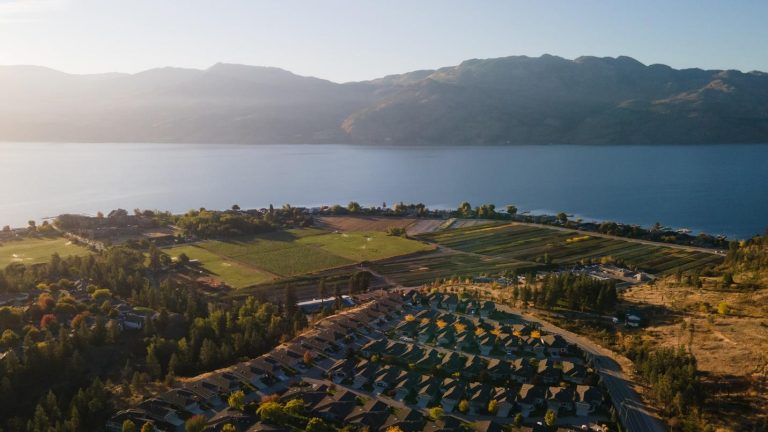Essential Tips for Effective Hunting Land Management
Being a passionate hunter and landholder, I recognize the significance of efficient hunting land management. It demands a strategic approach to elevate your property’s potential in terms of habitat quality and hunting achievements.
I’ll draw from my experiences to offer insights and practical tips for successful hunting land management, with a focus on essential elements like food sources, shelter, water access, and sustainable planning.
Assess and Map Your Property; Building a Comprehensive Insight
Prior to initiating any management strategies, it’s vital to conduct an assessment of your property. This involves mapping out areas such as fields, wooded sections, feeding grounds, water bodies and preservation zones. Creating a map has proven invaluable in grasping the property layout and pinpointing areas that could benefit from enhancements.
I suggest surveying neighboring properties to pinpoint gaps and prospects that could offer you an edge. A bird’s eye view map can be particularly useful in uncovering resources or shelter that your property can complement or enhance. By grasping the context, you can make choices that will enrich the overall quality of the habitat.
Establish Your Objectives; Matching Your Vision with Your Property
A crucial aspect of land management for hunting is setting goals. What type of deer population do you aim to attract, and what kind of hunting experience are you looking for? In my experience, outlining specific objectives upfront has played a role in shaping my management choices.
Once your goals are defined, create a plan that reflects them. Take into account factors like deer numbers, food availability, and hunting pressure. A well-thought out plan should also incorporate methods and tactics to improve the deer habitat for the upcoming seasons.
It’s important to remember that successful management isn’t just about benefits but about securing the long term well being and sustainability of your hunting grounds.
Managing Food Plots: Ensuring Year Round Nutrition
Food plots can greatly influence deer attraction and nutrition levels. According to research from the National Deer Association, properly maintained food plots can contribute significantly to a deer’s diet at certain times of the year.
When planning your food plots, focus on providing nutrition throughout the year and introducing crops for different seasons. Maintain a balance between annuals and perennials to support the deer population throughout the year. In my experience, a combination of clover chicory and brassicas has proven to be a way to establish a nutritious food source.
Make sure your fields aren’t overgrazed by having resting areas and rotating crops to keep the soil in good condition. Overgrazing can stunt plant growth. Reduce the quality of your food plots, affecting the overall well being of your deer herd.
Creating Safe Spaces: Establishing Deer Bedding Sanctuaries
Having cover is crucial for attracting and keeping deer on your property. Develop spots and designate sanctuaries where deer can relax without disturbance. These areas offer a feeling of security, enticing deer to spend time on your land.
Think about thinning out or harvesting timber selectively to encourage new growth. Use techniques, like hinge cutting to create brush cover. A placed sanctuary will prompt deer activity towards feeding areas nearby, increasing your chances of a successful hunting experience.
Enhancing Land Profitability through Timber Stand Improvement
Using methods such as thinning and clear cutting to promote regrowth and diversify the habitat is important. It’s crucial to collaborate with certified foresters who have knowledge of wildlife management to prevent harvesting and ensure habitat growth.
In my experience, selective timber harvesting not only enhanced the overall health of my woods but also brought in extra income that I could invest back into managing my hunting land.
Water Sources; Ensuring Hydration
Water is a resource for deer, especially in arid regions. If natural water sources are limited on your land, consider installing ones like ponds or micro watering holes. Providing access to water boosts the herds health and promotes predictable movement patterns.
I’ve personally seen the benefits of adding water sources to my hunting grounds. By placing them near food plots and bedding areas, I’ve noticed increased deer activity and better overall herd well being.
Hunting Pressure; Reducing Disturbances
When it comes to the art of hunting, the strategic positioning of access points and stands plays a crucial role in the overall success of your hunting endeavors. As an experienced hunter, I cannot stress enough the importance of ensuring your access points and stands are thoughtfully situated, with the utmost consideration given to minimizing disturbance to the deer population.
In my years of hunting, I have learned that the placement of each stand requires a meticulous approach, taking into account a multitude of factors that can greatly influence the behavior and movement patterns of the deer.
One of the most significant factors to consider is the wind direction. It is essential to position your stands in a manner that allows you to approach and depart without alerting the keen senses of the deer. By carefully studying the prevailing wind patterns in your hunting area, you can strategically place your stands to ensure that your scent is carried away from the deer, rather than towards them.
Another crucial aspect to consider when positioning your stands is the entry and exit paths. It is imperative to choose routes that allow for quiet and discreet access, minimizing the chances of startling or disturbing the deer. In my experience, I have found that utilizing natural features such as ridges, hollows, and dense vegetation can provide excellent cover and concealment, allowing you to enter and exit your stands without detection.
It is worth noting that the specific exit strategy for each stand should be carefully planned in advance. When the moment of truth arrives, and you have successfully harvested a deer, it is crucial to have a well-thought-out plan for extracting the animal from the area with minimal disturbance to the surrounding environment. This may involve the use of game carts, ATVs, or even enlisting the help of fellow hunters to ensure a swift and efficient removal process.
Evaluate and Adapt: Monitoring Progress
Managing hunting land effectively is a task that involves assessing and adjusting your approach. Keep an eye on how your management plan’s progressing and be prepared to make changes based on what you observe or the data you gather.
I’ve discovered that using trail cameras offers insights into herd behavior and food plot utilization. By reviewing the footage, I can spot tactics as well as areas that need improvement. Annual reviews are essential for tracking the success of your management endeavors. Reflect on what worked and what didn’t, and use those lessons to tune your plan for the season.
A Fulfilling Journey
Managing hunting land effectively is an experience that requires a combination of strategy and action. Through inventory taking, goal setting habitat management, and regular progress assessments, you can create an environment that benefits both the deer population and your hunting enjoyment.
Being a hunter and landowner, I can confirm the joy that comes from witnessing the results of your efforts in managing the land. Seeing a deer population flourish on your property truly reflects your commitment and perseverance.
It’s important to understand that successful hunting land management is a journey of growth, adjustment, and enhancement. By staying dedicated to these principles and proven techniques, you can unlock the potential of your land and savor fruitful hunting experiences, for many seasons ahead.







